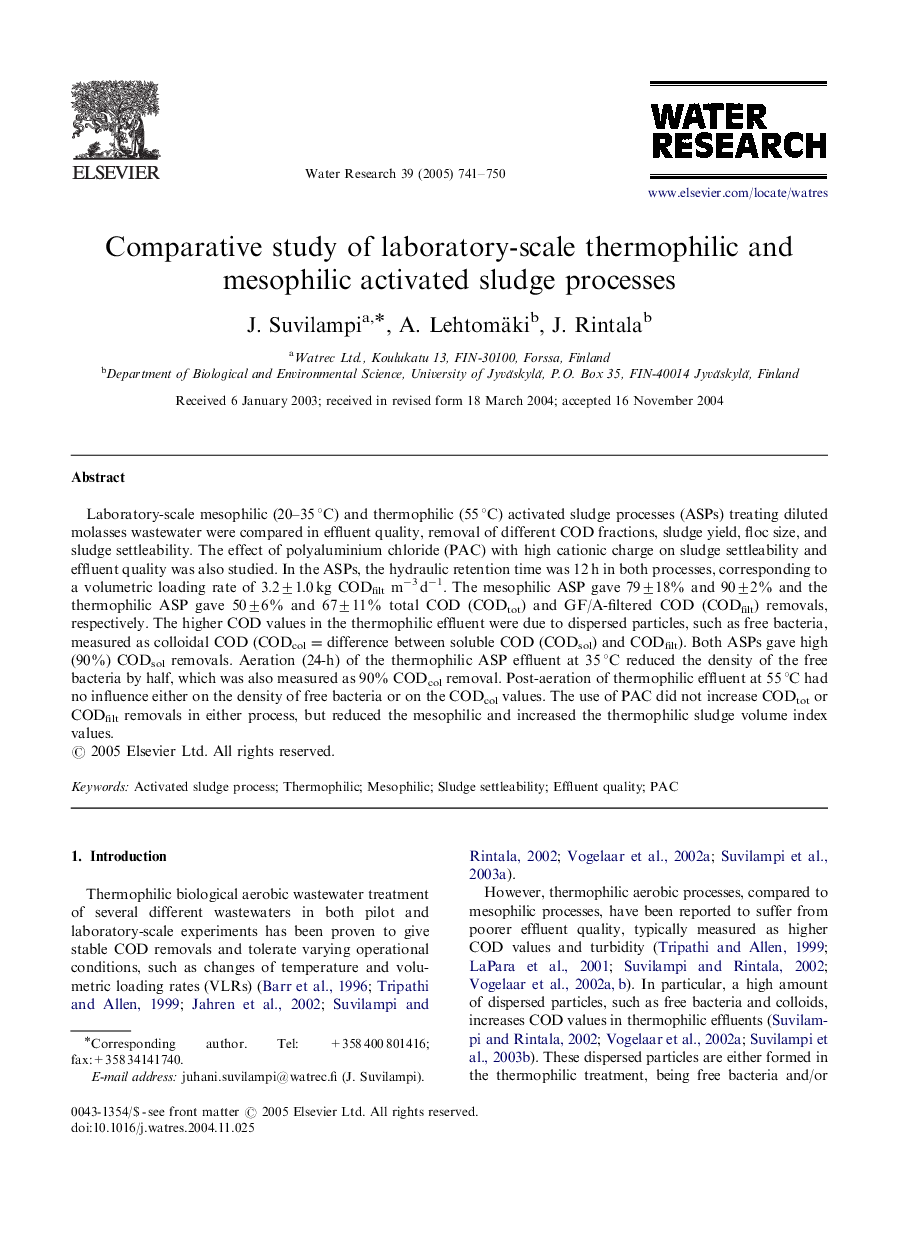| Article ID | Journal | Published Year | Pages | File Type |
|---|---|---|---|---|
| 9468279 | Water Research | 2005 | 10 Pages |
Abstract
Laboratory-scale mesophilic (20-35 °C) and thermophilic (55 °C) activated sludge processes (ASPs) treating diluted molasses wastewater were compared in effluent quality, removal of different COD fractions, sludge yield, floc size, and sludge settleability. The effect of polyaluminium chloride (PAC) with high cationic charge on sludge settleability and effluent quality was also studied. In the ASPs, the hydraulic retention time was 12 h in both processes, corresponding to a volumetric loading rate of 3.2±1.0 kg CODfilt mâ3 dâ1. The mesophilic ASP gave 79±18% and 90±2% and the thermophilic ASP gave 50±6% and 67±11% total COD (CODtot) and GF/A-filtered COD (CODfilt) removals, respectively. The higher COD values in the thermophilic effluent were due to dispersed particles, such as free bacteria, measured as colloidal COD (CODcol=difference between soluble COD (CODsol) and CODfilt). Both ASPs gave high (90%) CODsol removals. Aeration (24-h) of the thermophilic ASP effluent at 35 °C reduced the density of the free bacteria by half, which was also measured as 90% CODcol removal. Post-aeration of thermophilic effluent at 55 °C had no influence either on the density of free bacteria or on the CODcol values. The use of PAC did not increase CODtot or CODfilt removals in either process, but reduced the mesophilic and increased the thermophilic sludge volume index values.
Related Topics
Physical Sciences and Engineering
Earth and Planetary Sciences
Earth-Surface Processes
Authors
J. Suvilampi, A. Lehtomäki, J. Rintala,
